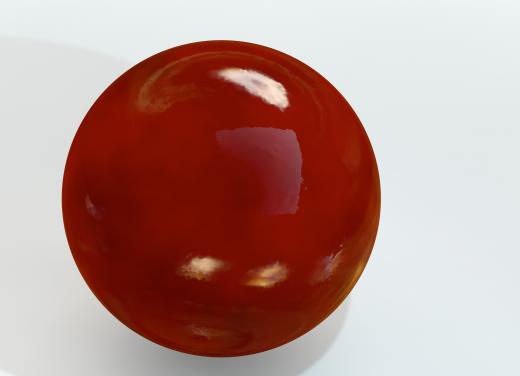At Sports&Hobbies, we're committed to delivering accurate, trustworthy information. Our expert-authored content is rigorously fact-checked and sourced from credible authorities. Discover how we uphold the highest standards in providing you with reliable knowledge.
How does Friction Affect the Motion of a Bowling Ball?
As a bowling ball moves down the lane, the amount of oil used on the lane can greatly affect its motion. A bowling lane is oiled to increase the speed of the ball as it gets closer to the pins, but once it gets close, the lane is typically less oiled. The friction between the ball and the lane as the pins get closer can cause greater spin or speed and cause the motion of a bowling ball to change.
With greater friction, the spin and overall motion of a bowling ball will increase, causing the ball to spin across the lane. If the lane is very well oiled, the speed of the ball will increase and the spin will be reduced when the ball gets to the other end of the lane.

The motion also depends on the weight of the ball — a heavier bowling ball will incur greater friction as it rolls toward the pins than a lighter ball. Even on well oiled lanes, there will be more friction changing the motion of a bowling ball if the ball is heavier. If any spin is put on a bowling ball, the amount of hook that is achieved depends on the friction produced as the ball is in motion. Spin will produce greater hook effect if there is less oil on the lane, increasing the friction and allowing the spin of the ball to slow the forward motion and appear to have a stronger hook. If the lane is well oiled on the pin end, the bowling ball, even with spin, will have less of a hook effect because the friction between the ball and the lane will be less and the ball will reach the pins faster.

Changing the technique used to roll a bowling ball can also change how it moves. If a ball is rolled without spin or with very little spin to resist the forward motion, the affect of friction will be less apparent because the ball is not also rolling in a side to side motion. This should decrease the friction between the ball and the lane, allowing the bowling ball to increase speed toward the pins.
A sideways spinning bowling ball will have more friction against the lane as it rolls, because the ball is rolling in multiple directions. As the friction increases, the forward motion of the ball will slow and the hook will be more apparent.
The motion of a bowling ball can make all of the difference in a bowler's score. The best way to test how this works would be to go bowling; aside from being quite fun, it will also show the bowlers just how much the ball's motion can change the game.
AS FEATURED ON:
AS FEATURED ON:












Discussion Comments
@ocelot60- You are right, and it is also all about the revolutions that your ball makes. I prefer more friction, because it seems to make getting a strike easier for me because the revolutions are greater.
When their is less friction in the lane, I just add a different twist and more force when I through the ball. This works for me, but every bowler's technique is different.
If you enjoy bowling simply for the sport and want to improve your game, you will learn how to use friction or the lack of friction to your advantage. After a few throws of the bowling ball, you can tell how much friction you have and adjust the way you throw the ball accordingly.
Post your comments